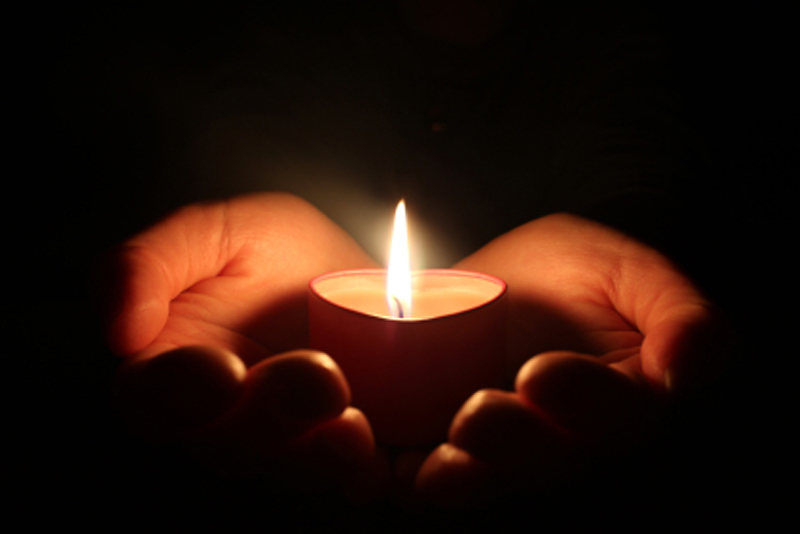Make Peace with Your Fears

Fear is a basic human emotion that when utilized properly can keep us out of harm’s way. For example suppose you feel a little stab of apprehension in regards to a relationship or something work related. A prospective boss is slightly condescending during the interview or a new significant other says they were too busy to return your phone call. Because these incidents seem trivial, you decide to ignore that twist in your gut only to find out later that you were not being silly or insecure. Your fears had recognized a bonafide red flag. Fears can warn you of pending trouble. Problems enter however when our fears become so debilitating we can’t live our best lives.
“The reality is everyone worries about something,” writes Adam Hamilton in Unafraid: Living with Courage and Hope in Uncertain Times Hamilton, senior pastor of a 22,000 member church in Kansas, admits that even after delivering thousands messages to congregations, funerals, college commencement ceremonies and even the National Prayer Service for President Obama’s second inauguration, he at times falls victim to insecurity. Hamilton says after witnessing firsthand the harmful effects of anxiety, worry and similar types of imprisoning emotions, he decided to study and write about fear to help himself and others.
In preparation for a sermon series on the subject of fear, Hamilton conducted a survey of the congregation at the United Methodist Church of the Resurrection. Out of the 2,400 people surveyed 85 percent reported living with a moderate or significant levels of fear. Fears varied among age groups. Those younger than 50 feared failure and of disappointing others while the greatest fear for those over 50 was the direction of the country.
One of the interesting things about Unafraid is how Hamilton tackles the concept of fear from a number of different angles including cognitive behavioral therapy, exposure therapy, brain science, Jewish and Christian scriptures and just plain facts.
For example 53 percent of Americans worry about crime and violence and believe that crime is on the rise. Meanwhile according to Bureau of Justice statistics violent crime rates have reduced by more than half since the early 1990s.
Hamilton even addressed a fear that I have had since I got my first job out of college and was told during a benefits orientation that I would have to save $500,000 to retire comfortably. That number has now risen to over a million. Meanwhile a study conducted by Bankrate found that 39% of Americans say they do not have an extra $1,000 to pay for an unplanned expense. So I am certain I am not the only one with retirement concerns.
“As we mature, most Americans spend a great deal of time focused on financial security in retirement,” says Hamilton. “But researchers note that the single most important indicator of happiness in retirement is not how much money you have in your 401(k) but the quality of your relationships.”
This is comforting information however, fear is not something that you confront once and then you’re home free. Rather fear “is a regular part of our lives,” writes Hamilton. “We can learn to address our fears, control them, learn from them, even use them.” While many of our fears are unfounded, there is no way to completely eradicate fear from our lives and according to Hamilton that is a good thing.
I borrowed Unafraid: Living with Courage and Hope in Uncertain Times from the local library.
“The reality is everyone worries about something,” writes Adam Hamilton in Unafraid: Living with Courage and Hope in Uncertain Times Hamilton, senior pastor of a 22,000 member church in Kansas, admits that even after delivering thousands messages to congregations, funerals, college commencement ceremonies and even the National Prayer Service for President Obama’s second inauguration, he at times falls victim to insecurity. Hamilton says after witnessing firsthand the harmful effects of anxiety, worry and similar types of imprisoning emotions, he decided to study and write about fear to help himself and others.
In preparation for a sermon series on the subject of fear, Hamilton conducted a survey of the congregation at the United Methodist Church of the Resurrection. Out of the 2,400 people surveyed 85 percent reported living with a moderate or significant levels of fear. Fears varied among age groups. Those younger than 50 feared failure and of disappointing others while the greatest fear for those over 50 was the direction of the country.
One of the interesting things about Unafraid is how Hamilton tackles the concept of fear from a number of different angles including cognitive behavioral therapy, exposure therapy, brain science, Jewish and Christian scriptures and just plain facts.
For example 53 percent of Americans worry about crime and violence and believe that crime is on the rise. Meanwhile according to Bureau of Justice statistics violent crime rates have reduced by more than half since the early 1990s.
Hamilton even addressed a fear that I have had since I got my first job out of college and was told during a benefits orientation that I would have to save $500,000 to retire comfortably. That number has now risen to over a million. Meanwhile a study conducted by Bankrate found that 39% of Americans say they do not have an extra $1,000 to pay for an unplanned expense. So I am certain I am not the only one with retirement concerns.
“As we mature, most Americans spend a great deal of time focused on financial security in retirement,” says Hamilton. “But researchers note that the single most important indicator of happiness in retirement is not how much money you have in your 401(k) but the quality of your relationships.”
This is comforting information however, fear is not something that you confront once and then you’re home free. Rather fear “is a regular part of our lives,” writes Hamilton. “We can learn to address our fears, control them, learn from them, even use them.” While many of our fears are unfounded, there is no way to completely eradicate fear from our lives and according to Hamilton that is a good thing.
I borrowed Unafraid: Living with Courage and Hope in Uncertain Times from the local library.

Related Articles
Editor's Picks Articles
Top Ten Articles
Previous Features
Site Map
Content copyright © 2023 by Leah Mullen. All rights reserved.
This content was written by Leah Mullen. If you wish to use this content in any manner, you need written permission. Contact Leah Mullen for details.






